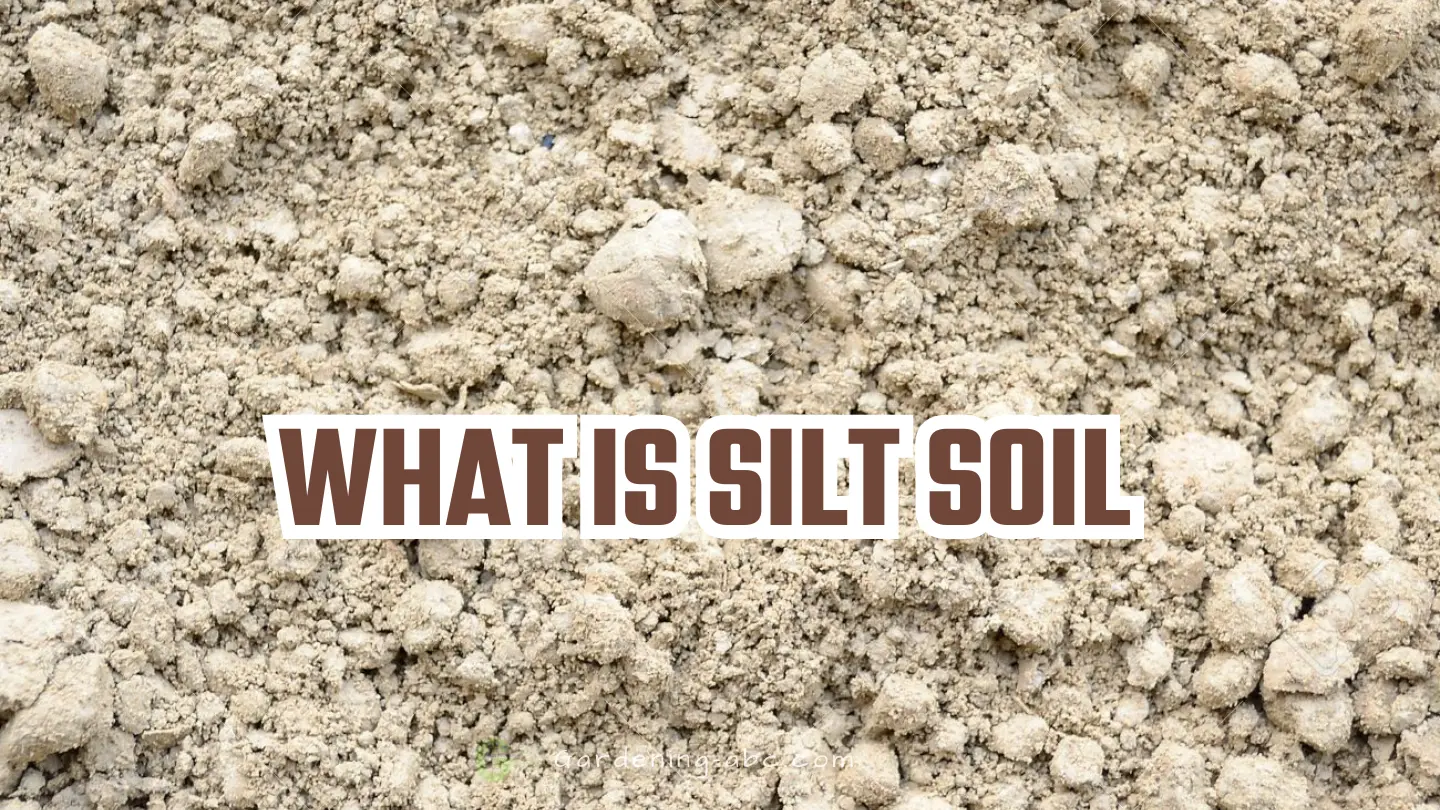We use affiliate links to run our site. When you buy through links on our site, we may earn an affiliate commission, without any added cost to you. Learn more
Have you ever dug your hands into the earth, feeling the fine particles slip through your fingers like baby powder? It’s a sensation that gardeners and farmers understand well, and it’s the essence of what we’re about to explore – the fascinating world of silt soil.
In the realm of gardening and agriculture, understanding your soil type is the first step towards success. Silt soil, often overshadowed by its sandy and clay counterparts, is a hidden gem that deserves attention. Many gardeners grapple with the challenges of soil compaction, drainage issues, or nutrient deficiencies without realizing that silt soil might hold the key to their solutions.
In this blog post, we’re about to unearth the secrets of silt soil. We’ll delve into its characteristics, its role in plant growth, and how you can make the most of this remarkable soil type in your garden.
Our focus is to shed light on the often overlooked silt soil, explaining why it’s a valuable asset for gardeners. You’ll discover that silt soil’s balance of texture, water retention, and aeration makes it an ideal medium for plant growth. By the time you finish reading, you’ll be equipped to maximize the potential of silt soil in your garden.
Let’s start this journey into the world of silt soil. It has something to offer everyone, whether you’re new to gardening or an expert.
What is Silt Soil:
By definition, silt is a granular material with a particle size between sand and clay. Silt particles must be between 0.002-0.05 mm, in diameter.
It is composed mostly of broken grains of quartz. It becomes soil when it becomes compacted or gets mixed with sand and clay. Silt soil contains a large amount of silt.
You will find silt mostly in freshwater lakes, ponds, playa lakes, streams, river deltas, and on the coast.
What is Silt Made of:
Silt is made up of rock and mineral particles. Although, some other minerals could also be part of its composition silt is primarily made of feldspar and quartz. They are larger than clay but smaller than sand. Individual silt particles are so small and are difficult to see.
Silt is a non-renewable resource and one of the 4 soil types, along with sand, clay, and loam.
Characteristics of Silt Soil:
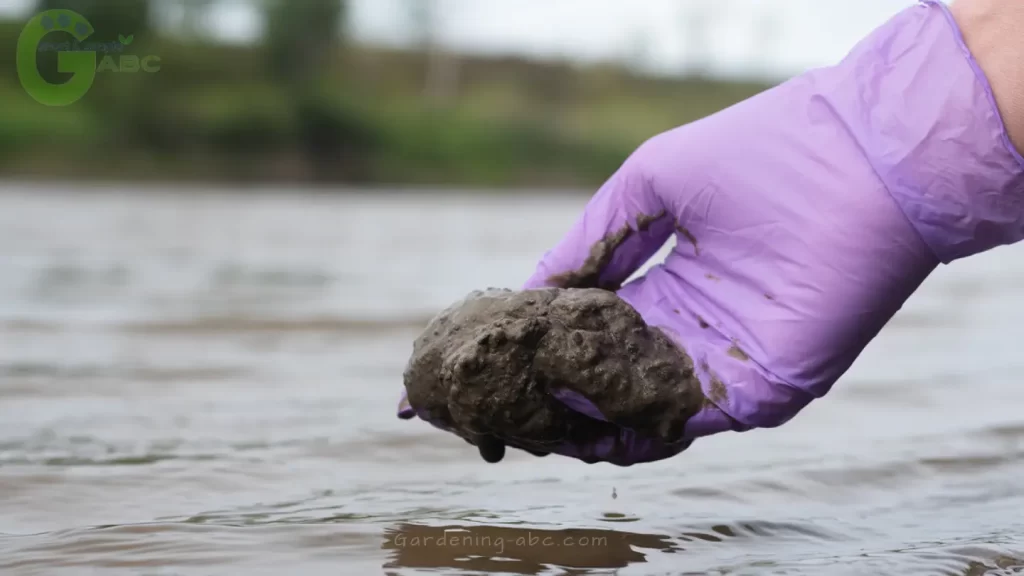
Silt soil is composed of fine particles, smaller than sand but larger than clay. It has a smooth and fine texture, often described as silky and soft to the touch. Here are some unique characteristics of silt:
- Texture: The dry silt feels like baby powder and the wet silt has a slippery and soapy texture. It does not clump easily like wet clay or crumble like wet sand.
- Shape: Silt has a spherical shape, while clay particles tend to be flat and wide. Sand feels rough because it has angular edges. Over time, these edges can wear down and become smoother.
- Color: Silt can vary in color, depending on the minerals present in the parent rock material. It can be gray, brown, yellow, or reddish.
- Moisture retention: Silt has a higher moisture-retention capacity than sandy soils, but not as much as clay soils. This makes it suitable for plants that require well-drained soil with moderate water-holding capacity.
- Occasionally forms a ribbon if you squeeze it between fingers and thumb, but is not as stable as clay.
- Silt soil is good for growing a variety of different things if you manage it properly. It provides a favorable environment for plant growth and is often found in areas with high agricultural productivity, such as river valleys and floodplains
These characteristics distinguish silt from other types of soil, like clay and sand, and can help you identify it by its texture and behavior.
Silty Soil Vs Loamy Soil:
Your soil composition will most likely have a mixture of silt, clay, and sand particles with varying levels of each. If more than 80 percent of its composition is made up of silt then the soil is considered as silty soil.
Loam is an equal mixture of sand, silt, and clay content. This type of soil can retain moisture during dry spells but still have enough drainage for healthy roots.

Here is a table that briefly summarizes the nature of the two soils:
| Characteristic | Silty Soil | Loamy Soil |
|---|---|---|
| Composition | Mostly silt particles, with some sand and clay particles | A mixture of sand, silt, and clay particles, with a balance of each |
| Texture | Fine and smooth | Crumbly and easy to work with |
| Water-Holding Capacity | High | High |
| Drainage | Good | Good |
| Nutrient Content | High in organic matter and nutrients | High in organic matter and nutrients |
| Fertility | Very fertile | Extremely fertile |
| Suitability for Agriculture | Good | Excellent |
| Suitability for Plant Growth | Good | Excellent |
| pH Level | Neutral to slightly alkaline | Slightly acidic to slightly alkaline |
where to find silt soil?
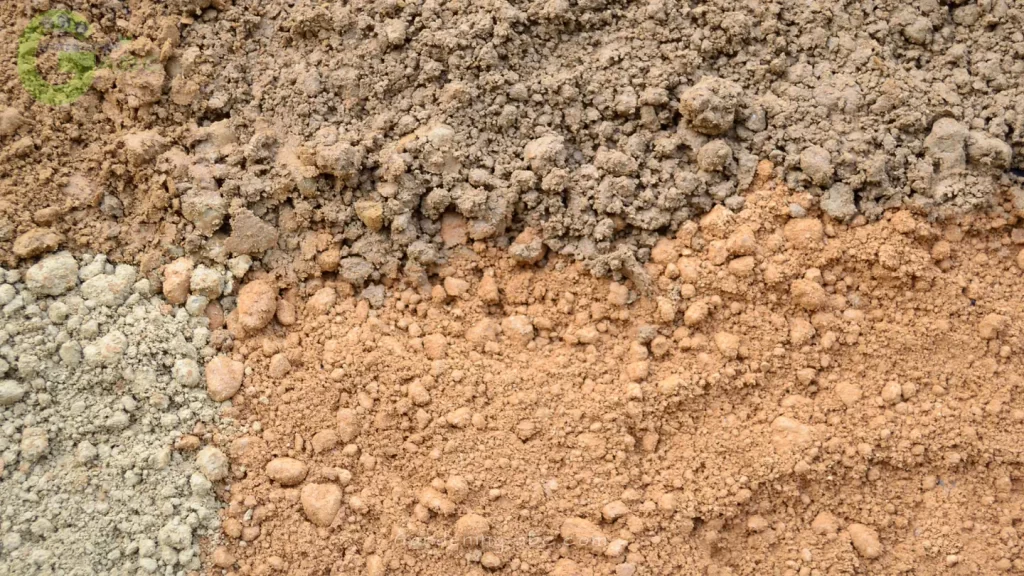
Silt soil is mainly found in the following locations:
- River deltas: Silt is often found in river deltas, where rivers deposit their sediment as they flow into larger bodies of water. This makes river delta areas, such as the Nile Delta in Egypt, fertile for agriculture due to the high silt content in the soil (source).
- Wind-deposited accumulations: Silt is also found in wind-deposited accumulations, particularly in central Asia, north China, and North America. These areas, such as the loess soils in central Asia and north China, are known for their high silt content and fertility.
- Near water bodies: Silt is easily transported by moving currents, so it is mainly found near rivers, lakes, and other water bodies. The proximity to water bodies contributes to the high silt content in the soil.
- Mountainous or glaciated regions: Silt deposits, such as loess, are often associated with glaciated or mountainous regions. High Asia has been identified as a major generator of silt, which accumulated to form the fertile soils of north India and Bangladesh, and the loess of central Asia and north China.
- Eroded areas: Silt soil can also be found in areas where erosion has occurred, such as on slopes or in areas with poor vegetation cover. In these areas, the top layer of soil is often eroded, leaving behind the silt particles.
Growing Plants In Silt Soil
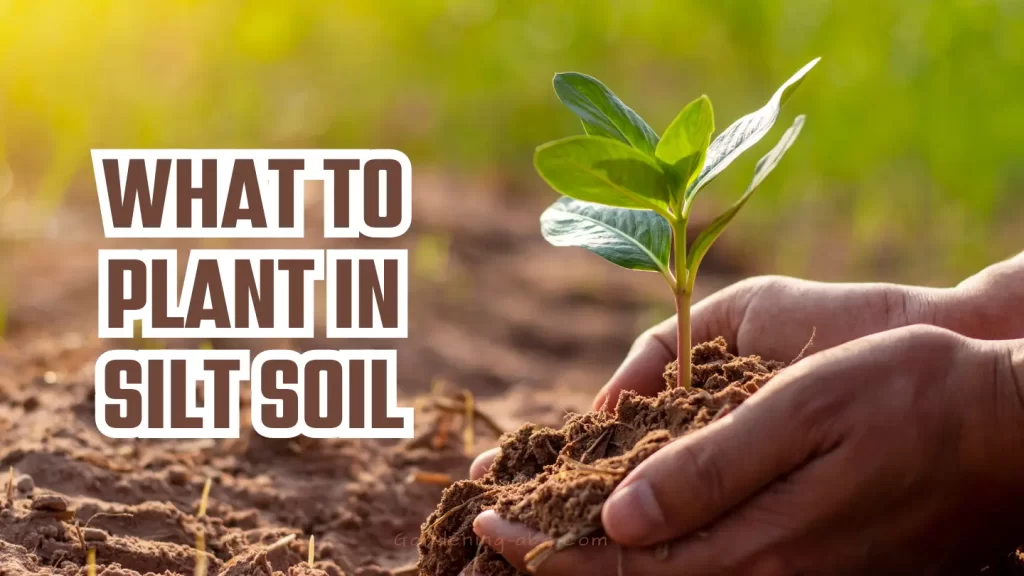
Is Silty Soil Good for Growing Plants?
Silty soil is a bit denser than sandy soil, and it drains well. It also lets air and water pass through it, which makes it easier for plants to grow.
By adding organic materials like compost to your silty soil, you should be able to grow most plants in your garden. Of course, there are certain plants that prefer loose sandy soil such as root vegetables, so growing those might be more difficult.
If you live in an area with heavier clay soil, don’t panic! You can still grow your vegetables. Vegetables that enjoy clay soil will also do well in silt because both soil types will allow the water to seep into it.
Additionally, unlike clay soil that dries out easily, silty soil won’t crack in the summertime which means that your plants will not be stressed!
Silty soil is also incredibly light and easy to move silt from one place to another.
Plants That Grow Well In Silty Soil:
You can grow an array of plants in silty soil. Some of them are:
- Hostas (Hosta spp.)
- Hellebore
- Cranesbill (Geranium spp.)
- Rose
- Daffodils
- Male fern and Ostrich fern etc.
How to Improve Silty Soil
Here are the 3 simple things you can do to improve the quality of the silty soil
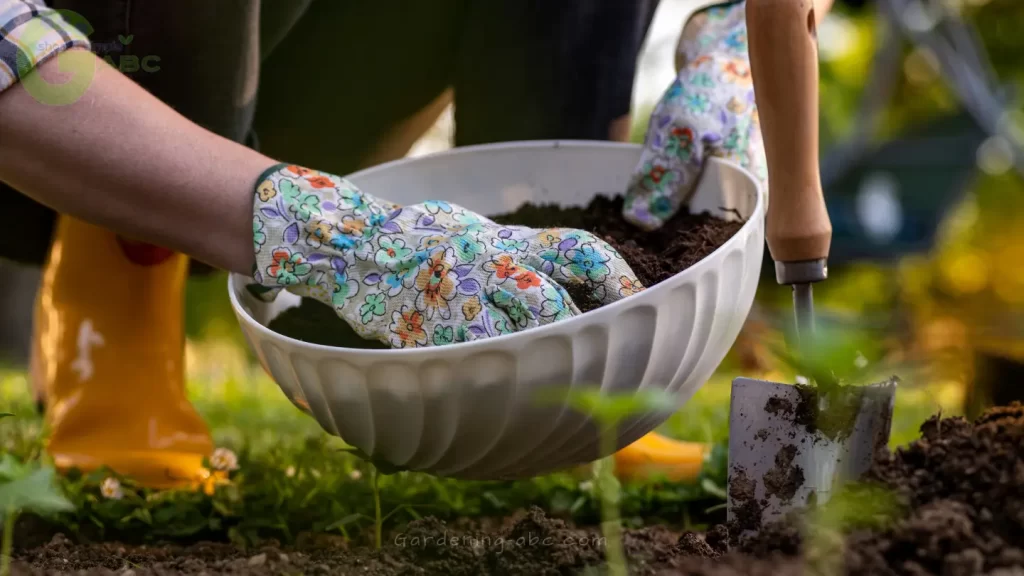
Preventing Erosion:
Silty soils tend to contain a lot of mineral particles, while few components of organic matter. This makes them fragile and prone to erosion and compaction.
if you have a sloped area the risk of soil erosion will be even more. One thing you can do to prevent soil erosion is to use terraces and other structures that prevent water from flowing into or across your garden. You can use stone, brick, or wood to do that.
Don’t break up the soil aggregates! Even though this is a popular form of soil treatment in large-scale agriculture, it speeds up erosion. The best thing to do is to garden using low-tilling or no-tilling methods.
Use cover crops. It is an excellent way to keep soil in place. As the soil is silty the best cover crop options would be buckwheat or berseem clover.
Adding Organic Matter to The Soil:
Your garden needs healthy, nutrient-rich soil so your plants can thrive. As silty soil contains very little organic matter you can manually augment it with organic substances and make it a better soil for growing plants.
There are many sources of organic matter that you can use. Things like compost, manure, leaves etc can make your soil full of nutrients, and ensure proper aeration and drainage.
Putting time and effort into amending your soil with organic matters is an investment. So have patience. You will get your reward at the end of each harvest.
Apply Mulch:
You can use compost, leaves, straw, and wood chips as mulch on top of your silty soil. If you want to give your garden a finished look, use bark or composted bark mulch. Some of these will break down over time and add more nutrients to the soil. To make the mulch effective apply at least 3-6 inches layer of mulch.
Mulch is an important part of a healthy garden. It maintains soil temperature and moisture and promotes plant growth. Mulch also helps control weeds and prevent soil erosion.
Final Thoughts:
Today we uncovered the secrets of silt soil. From its definition to where it’s found, we’ve delved into the world of this often-overlooked soil type. Now, let’s connect the dots and bring this exploration to a satisfying close.
In summary, silt soil is a valuable resource for gardeners and farmers. Its unique characteristics, such as its fine texture and excellent drainage, make it an ideal medium for plant growth.
As you’ve learned about the wonders of silt soil, it’s time to reflect on your gardening practices. How can you make the most of this unique soil type? Are there specific plants or crops you’d like to cultivate in silt soil? Share your thoughts and experiences; we’d love to hear from you.
But our journey doesn’t end here. Gardening is a continuous adventure, and there’s more to explore. In our upcoming articles, we’ll dive deeper into gardening techniques, plant selection, and how to create the garden of your dreams using silt soil as your canvas.
As you step away from this article and into your garden, consider conducting a soil test to determine if you have silt soil. If you do, think about how you can optimize your gardening practices to take full advantage of its qualities.
Thank you for joining us on this journey through the world of silt soil. We’re excited to be your gardening companion. Together, we’ll continue to explore, learn, and cultivate beautiful gardens.
Frequently Asked Questions:
Is it necessary to amend silty soil before planting?
Amending silty soil is not always necessary but is recommended for optimal plant growth. It helps improve its structure, nutrient availability, and drainage capabilities.
How often should I water plants in silty soil?
The frequency of watering depends on various factors such as plant type, weather conditions, and the specific moisture needs of your plants. Monitor the moisture levels regularly and water accordingly.
Amazon and the Amazon logo are trademarks of Amazon.com, Inc, or its affiliates.

Hi there! My name is Prasenjit and I’m an avid gardener and someone who has grown a passion for growing plants. From my hands-on experience, I have learned what works and what doesn’t. Here I share everything I have learned.
